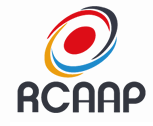Ovine herpesvirus type 2-induced malignant catarrhal fever in a heifer
DOI:
https://doi.org/10.5433/1679-0359.2013v34n6Supl2p3903Palavras-chave:
Bovine disease, Neuropathology, Histopathology, Molecular biology.Resumo
The clinical, pathological, and molecular findings due to malignant catarrhal fever lesions induced by ovine herpesvirus type 2 (OvHV-2) are described in a 12-month-old, mixed-breed, heifer from northern Paraná, Brazil. The animal demonstrated clinical signs including manifestations of aggressive behavior, nystagmus, incoordination, decumbency, paddling movements, and death within 48 hours, after which was submitted for routine necropsy. Brain fragments were used in PCR assays for identification of infectious agents (OvHV-2; bovine herpesvirus-1 and -5; and Histophilus somni). Rabies was discarded in test done at official state diagnostic laboratory. Significant pathological alterations include disseminated vasculitis with lymphoplasmacytic inflammatory infiltrate within the brain, kidneys, liver, and myocardium. PCR assay amplified the specific422base pair fragment of the OvHV-2 tegument protein gene from the brain; all other evaluations were negative. These findings confirm the participation of OvHV-2 in the etiopathogenesis of the disease observed in this mixed-breed heifer.
Downloads
Downloads
Publicado
Como Citar
Edição
Seção
Licença
Semina: Ciências Agrárias adota para suas publicações a licença CC-BY-NC, sendo os direitos autorais do autor, em casos de republicação recomendamos aos autores a indicação de primeira publicação nesta revista.
Esta licença permite copiar e redistribuir o material em qualquer meio ou formato, remixar, transformar e desenvolver o material, desde que não seja para fins comerciais. E deve-se atribuir o devido crédito ao criador.
As opiniões emitidas pelos autores dos artigos são de sua exclusiva responsabilidade.
A revista se reserva o direito de efetuar, nos originais, alterações de ordem normativa, ortográfica e gramatical, com vistas a manter o padrão culto da língua e a credibilidade do veículo. Respeitará, no entanto, o estilo de escrever dos autores. Alterações, correções ou sugestões de ordem conceitual serão encaminhadas aos autores, quando necessário.
















